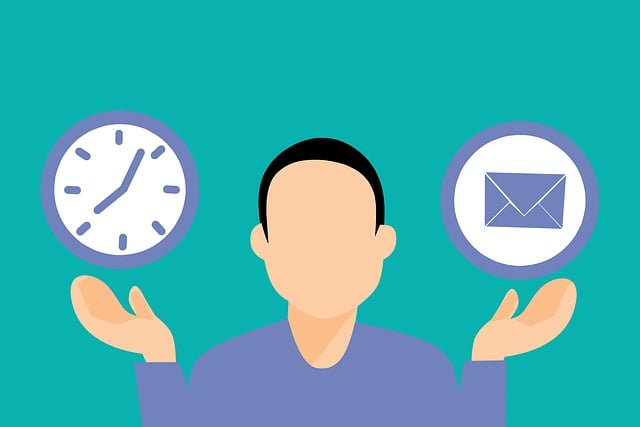Don’t let your email marketing strategy be a shot in the dark. In the world of e-commerce, where competition is fierce and customers are easily distracted, it’s crucial to avoid common mistakes that can undermine your efforts.
After all, you don’t want to be caught with your pants down, missing out on potential sales. In this article, we’ll shed light on the 7 email marketing mistakes that many e-commerce stores make and show you how to steer clear of them.
From inconsistent email frequency that leaves your subscribers in the dark, to neglecting personalization that makes them feel like just another face in the crowd, we’ll show you the ropes of effective email marketing.
So, buckle up and get ready to transform your email campaigns into a powerhouse that drives engagement, conversions, and ultimately, revenue. Let’s dive in and tackle these mistakes head-on.
Key Takeaways
- Inconsistent email frequency can lead to trust issues and lower deliverability
- Neglecting personalization makes customers feel like just another face in the crowd
- Overwhelming subscribers with too many emails can lead to unsubscribes
- Failing to optimize emails for mobile devices can result in missed opportunities
Inconsistent Email Frequency
Don’t leave your subscribers hanging by sending emails inconsistently; they’ll appreciate a regular cadence of messages from your e-commerce store. Consistency is key when it comes to email marketing. Not only does it help build trust and credibility with your audience, but it also improves email deliverability.
By establishing a consistent email frequency, you can ensure that your messages don’t end up in the spam folder and reach your subscribers’ inboxes. Additionally, implementing email segmentation allows you to tailor your content based on subscribers’ preferences and behaviors, increasing engagement and conversion rates.
However, it’s important to strike a balance and avoid bombarding your subscribers with too many emails, as this can lead to unsubscribes.
Now, let’s move on to the next section about neglecting personalization.
Neglecting Personalization
Neglecting personalization can leave customers feeling like just another face in the crowd. In today’s competitive e-commerce landscape, personalization is key to standing out and building strong customer relationships. By tailoring your emails to each individual recipient, you can create a more engaging and relevant experience that resonates with your audience.
Personalized emails have been shown to have higher open rates, click-through rates, and conversion rates. There are several personalization strategies you can implement, such as using the recipient’s name in the subject line or body of the email, segmenting your email list based on demographics or purchase history, and recommending products based on past purchases or browsing behavior.
By incorporating personalization into your email marketing strategy, you can increase customer loyalty and drive more sales.
Moving on to overwhelming subscribers with too many emails…
Overwhelming Subscribers with Too Many Emails
You may find yourself drowning in a sea of emails if you flood your subscribers’ inboxes with an overwhelming amount of messages, leaving them feeling like they are caught in a torrential downpour of information. To avoid overwhelming your subscribers, it is crucial to practice email segmentation and A/B testing. By segmenting your subscribers based on their preferences, demographics, or purchase history, you can send them more targeted and personalized emails. This not only increases engagement but also reduces the likelihood of unsubscribes. Additionally, conducting A/B testing allows you to test different email strategies and determine what works best for your audience. By finding the right balance and frequency of emails, you can keep your subscribers engaged without overwhelming them. Failure to do so may result in missed opportunities and decreased conversions. Now, let’s dive into the next section about failing to optimize for mobile.
Failing to Optimize for Mobile
If you want to maximize the effectiveness of your email marketing for your e-commerce store, it’s crucial that you optimize your emails for mobile devices.
With more and more people accessing their emails on their smartphones and tablets, failing to optimize for mobile can result in missed opportunities and lost sales.
By using responsive email design, you can ensure that your emails are visually appealing and easy to navigate on any screen size. This ultimately increases engagement and conversions.
Importance of mobile optimization
Don’t miss out on potential sales by not optimizing your emails for mobile devices. Make sure your content is visually appealing and easy to navigate on smaller screens. With a mobile-first approach, you can ensure that your emails are designed to be mobile-friendly, providing a seamless experience for your customers.
Mobile optimization is crucial because more and more people are accessing their emails on their smartphones and tablets. By neglecting this aspect, you risk alienating a significant portion of your audience and losing out on potential conversions. A visually appealing and easy-to-navigate email on a smaller screen can improve engagement and increase click-through rates.
So, make sure your emails are designed with a mobile-friendly approach and keep your customers engaged wherever they are.
In the next section, we will discuss the importance of responsive email design.
Responsive email design
When it comes to designing emails, it’s important to consider responsive email design. Responsive email design ensures that your email adapts to different screen sizes, increasing the likelihood of engagement and conversion.
Did you know that 75% of smartphone users delete emails if they can’t read them easily on their devices? To create effective emails, follow these email design best practices:
-
Use responsive email templates: These templates automatically adjust the layout and formatting of your email to fit various screen sizes, ensuring a consistent and user-friendly experience.
-
Keep it simple: Opt for a clean and minimalistic design that is easy to read and navigate on smaller screens.
-
Optimize images: Compress images to reduce file size and load time, ensuring faster and smoother loading on mobile devices.
-
Test across devices: Make sure to test your emails on different devices and email clients to ensure they display correctly.
By implementing responsive email design and following these best practices, you can create compelling emails that engage your audience and drive conversions.
Now let’s discuss the importance of not ignoring email analytics.
Ignoring Email Analytics
Make sure you’re not ignoring email analytics – they provide valuable insights into your e-commerce store’s performance. By analyzing email metrics such as open rates, click-through rates, and conversions, you can gain a deeper understanding of your audience’s behavior and preferences. This knowledge allows you to refine your email segmentation strategy and create more targeted campaigns, resulting in higher engagement and conversions.
Additionally, email analytics can help you identify and address any issues with email deliverability, ensuring that your messages reach your customers’ inboxes. Neglecting to clean and update your email list can lead to decreased engagement and deliverability issues, so it’s important to regularly remove inactive subscribers and keep your list up to date.
Remember, understanding and leveraging email analytics is crucial for optimizing your e-commerce store’s email marketing efforts. Transitioning into the next section, let’s discuss the consequences of neglecting to clean and update your email list.
Neglecting to Clean and Update Your Email List
To maximize the effectiveness of your email marketing campaigns, it’s crucial to regularly remove inactive subscribers from your email list. By doing so, you can ensure that your messages are reaching an engaged audience who’re more likely to convert into customers.
Additionally, implementing a double opt-in process can help you maintain a clean and updated email list by verifying the authenticity of your subscribers and reducing the chances of spam or fake accounts.
Regularly removing inactive subscribers
Don’t ignore the importance of regularly removing inactive subscribers, as it can validate the theory that maintaining an engaged email list leads to better results for your e-commerce store.
By re-engaging inactive subscribers, you have the opportunity to win back their attention and potentially increase sales. Segmenting your email lists allows you to send targeted content and offers to specific groups, increasing the chances of re-engagement.
Removing inactive subscribers not only improves your open and click-through rates, but it also ensures that your email list remains clean and up-to-date. This will ultimately result in higher deliverability and better engagement with your active subscribers.
Now, let’s explore another strategy to enhance your email marketing efforts: implementing a double opt-in process.
Implementing a double opt-in process
Implementing a double opt-in process can be a smart move to ensure that only genuinely interested subscribers join your email list, resulting in better engagement and higher quality leads. With a double opt-in, subscribers are required to confirm their email address before being added to your list. This extra step may seem like a hassle, but it offers several benefits.
Firstly, it helps to maintain a clean and engaged email list by filtering out fake or mistyped email addresses. This ensures that your messages reach the right people and improves deliverability rates. Secondly, it reduces the risk of spam complaints since subscribers have explicitly confirmed their interest. Lastly, it helps to build trust with your audience, as they know they are in control and have actively chosen to receive your emails.
However, it’s important to consider the pros and cons of using a double opt-in process. While it may improve the quality of your list, it can also result in a smaller subscriber base due to the additional step. Additionally, some subscribers may find the process cumbersome and lose interest. Ultimately, it’s crucial to weigh the benefits and drawbacks to decide if implementing a double opt-in process is the right choice for your e-commerce store.
| Benefits of Single Opt-in Process | Pros and Cons of Using Double Opt-in |
|---|---|
| – Simplicity and convenience | – Higher quality leads |
| – Larger subscriber base | – Improved deliverability rates |
| – Faster list growth | – Reduced risk of spam complaints |
| – Builds trust with subscribers |
Frequently Asked Questions
How can I determine the ideal frequency for sending emails to my e-commerce store subscribers?
To determine the ideal frequency for sending emails to your e-commerce store subscribers, you need to strike a balance. It’s crucial to find a frequency that keeps your subscribers engaged without overwhelming them.
Effective personalization techniques can help you achieve this. Consider factors such as the nature of your business, customer preferences, and the type of content you’re sending.
Regularly monitor engagement metrics like open rates and click-through rates to fine-tune your email frequency and ensure maximum effectiveness.
What are some effective ways to personalize email content for e-commerce customers?
To effectively personalize email content for e-commerce customers, try implementing segmentation strategies.
Did you know that personalized emails have a 29% higher unique open rate and a 41% higher click-through rate?
By segmenting your email list based on customer behavior, preferences, or demographics, you can tailor your content to their specific needs and interests.
This not only enhances the customer experience but also increases engagement and drives conversions.
Take advantage of the benefits of segmentation and watch your email marketing efforts soar.
Are there any best practices for balancing the number of emails sent to subscribers without overwhelming them?
Balancing email frequency is crucial to keep subscribers engaged without overwhelming them. Avoiding email fatigue is essential to maintain a positive relationship with your customers. By finding the right balance, you can ensure that your emails aren’t seen as spammy or intrusive.
Consider segmenting your email list based on customer preferences and behaviors. Use automation tools to send targeted and relevant messages.
Regularly monitor engagement metrics to optimize your email frequency and keep your subscribers happy.
What are the key factors to consider when optimizing email campaigns for mobile devices?
When optimizing email campaigns for mobile devices, there are key factors to consider.
Mobile optimization is crucial, ensuring that your emails display properly and are easy to read on smaller screens.
Responsive design is essential, allowing your emails to adapt to different screen sizes and orientations.
By implementing these strategies, you can improve the user experience, increase engagement, and ultimately drive more conversions from your mobile audience.
Don’t overlook the importance of mobile optimization in your email marketing efforts.
How can email analytics help improve the performance of my e-commerce store’s email marketing strategy?
Email analytics can greatly improve the performance of your e-commerce store’s email marketing strategy. By analyzing data such as open rates, click-through rates, and conversion rates, you can gain valuable insights into the effectiveness of your campaigns.
For example, let’s say you segment your email list based on customer preferences and send targeted emails. By monitoring the analytics, you can determine which segments are most engaged and adjust your strategy accordingly.
Additionally, monitoring email deliverability metrics can help you identify and address any issues that may be affecting your email deliverability.
Conclusion
To ensure email success, avoid these e-commerce email errors.
Consistency is key; don’t overwhelm subscribers with excessive emails.
Personalize your messages to connect with customers on a deeper level.
Optimize for mobile to reach a wider audience.
Analyze email metrics to refine your strategy.
Regularly clean and update your email list for maximum effectiveness.
By sidestepping these mistakes, you’ll secure success in your e-commerce email campaigns, captivating customers and boosting your bottom line.






